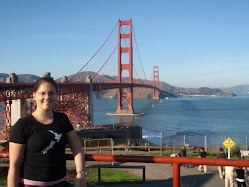28 April 2008
EGYPT - Aswan
We woke up in Aswan today and had a quick walk to our hotel which was located on the main stretch. They afternoon we walked through the markets (the are the worst ones for hassling) and then went for a swim. It was so hot it was nice to just lax out by the pool - something you can't do in London.

That night we jumped on a boat and headed to a restaurant on an island near the Nile for a dinner at a Nubian restaurant. After dinner the waiters all got up and did a bit of dancing.
This man spun around and around for ages ----->
29 April 2009
This morning we got up at 3am to head to the Temples of Abu Simbel. We got up so early to avoid the heat and because we had to have a tourist police convoy.

Abu Simbel - (Arabic: أبو سنبل or أبو سمبل) is an archaeological site comprising two massive rock temples in southern Egypt. It is part of the UNESCO World Heritage Site known as the "Nubian Monuments". The twin temples were originally carved out of the mountainside during the reign of Pharaoh Ramesses II in the 13th century BC, as a lasting monument to himself and his queen Nefertari, to commemorate his alleged victory at the Battle of Kadesh, and to intimidate his Nubian neighbors. However, the complex was relocated in its entirety in the 1960s, on an artificial hill made from a domed structure, high above the Aswan High Dam reservoir. The relocation of the temples was necessary to avoid their being submerged during the creation of Lake Nasser, the massive artificial water reservoir formed after the building of the Aswan High Dam on the Nile River. Abu Simbel remains one of Egypt's top tourist attractions.

Abu Simbel temple - above Nefertair temple
Unfortunately we only had about half an hour to look around the temples, but it was cool. Inside there are lots of different rooms and passages that have lots of hieroglyphics. At the back insdie the big temple there are four statutes ...
The axis of the temple was positioned by the ancient Egyptian architects in such a way that twice a year, on October 20 and February 20, the rays of the sun would penetrate the sanctuary and illuminate the sculpture on the back wall, except for the statue of Ptah, the god connected with the Underworld, who always remained in the dark. These dates are allegedly the king's birthday and coronation day respectively.
That afternoon when we got back from the temples we laxed out a bit before heading to the Nile to board our Felucca boats.





No comments:
Post a Comment